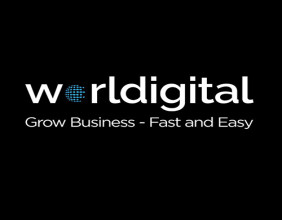Commodities as an investment are different from bond or stocks as they are more crucial for various industries as raw materials for their finished products. For instance, the most significant use of gold is the manufacturing of electronics, while major industrial use of silver is in the manufacturing of electrical conductors. Oil serves as major raw materials constituent in the petroleum and chemical industries or as fuel in the various kinds of machines. The major difference between commodities and other investment asset classes like equities and bonds, that they do not hand over any kind of recurring or annual cash flows in the hands of investors, like interest payment in bond investing and dividend payment in equity investing. The only way to benefit from commodity investing is when their price movement is in the direction you bet for.
Therefore, price movement in commodities is very crucial for both, industries and commodity investors as well, so it is very important to analyse how the price change in one commodity could have a positive or negative impact on other commodities. So, the relationship between these commodities is needed to be analysed in detail.
Oil vs Gold
The analystsâ community generally consider that oil and gold prices typically are correlated to each other, however, there is no direct relationship between movement in the oil and gold prices. But many times, it has been noticed that when oil prices are high or are in an uptrend, gold prices follow the same trend.
Higher oil prices in the international oil market often fuel inflationary pressure, as an increase in oil prices lead to an increase in gasoline (petrol) prices which is a crude derivate. If gasoline prices surge, it would result in increased transportation costs for the flow of goods from one place to another, which would ultimately result in increased prices of those goods as variable costs tend to edge higher. The final result of this vicious cycle will ultimately be the increase in price levels or fuel inflation.
Another impact of oil price surge could be the increase in precious metals prices as they are more synched with the prevailing inflation rates in the wider economies. So, an uptick in crude oil prices eventually results in an increase in metal prices as well. However, there is no perfect relationship between oil price movement and change in precious metal prices, but in long-run precious metal, price tends to chase where the oil is trading at.
Gold prices oscillating near 7-years peak level
The yellow metal traded higher for the 5th straight day in a row as on January 08, 2020 (Wednesday), as it traded at USD 12.30 or 0.77% higher at USD 1,586.35/onz at 08:50 AM GMT. Also, during the day trade, it recorded a 52-week high level of USD 1,612.95/onz. Gold prices touched the highest level in the past seven years after August 28, 2013, price level of 1,597.0 during the January 08, 2020 trading session. The prevailing trend is largely driven by heightened tension in the Middle East after the United States killed a top Iranian General "Qasem Soleimaniâ as on January 03, 2019.
The unprecedented killing of Qasem Soleimani last week, led investors to go for safe-haven Gold investment to protect their investment and restricted their losses. As time and again gold has provided safety during the heightened political and economic uncertainties.
The gold prices peaked up further after one Iranian official on January 07, said that Tehran was considering 13 scenarios to retaliate over Soleimani's killing by the United States. However, the US defence secretary had denied on reports that the United States was planning to withdraw their troops from Iraq.
Meanwhile, a peace of breaking news came from the Middle East on January 8, that US troops have fired ballistic missiles, one at Al Asad and one in Lrbli at about 10:30 PM GMT, hours after Soleimaniâs burial.
According to the report, Al Asad airbase located in western Iraq was attacked by at least six missiles and Iranâs Supreme Leader Ayatollah Khamenei said that âitâs a slap in the face of United Statesâ.
This attack has again sent oil prices higher in the January 08, 2020 trading session, as international crude benchmark Brent oil traded 0.90% higher at USD 69.25/bbl at 10:40 AM GMT and registered an intraday high of USD 71.28/bbl and a low of USD 68.28/bbl. American Oil benchmark Crude WTI, traded 1.02% higher at USD 63.48/bbl and during the day trading session, it touched a dayâs high of USD 65.65/bbl and a dayâs low of USD 62.74/bbl, respectively.
The recently escalated tension in the Middle East is sending oil prices higher, which would lead to increase in the price level or fuel inflation, as gasoline prices will move higher and inflationary pressure could result in higher demand for safe-haven precious metals in near-term.
Global equity markets are also reacting negatively, and the prevailing trend is far away from what was expected for the global equity market in 2020. As the US-China cooled their temper to some extent regarding the trade war and Brexit fear too had minimised, the developments which made the global market highly volatile in 2019, now the inflated Middle East tension is all set to drive steep volatility in the equity market in 2020. Also, the US Dollar Index was edging higher for the second consecutive days in a row and traded approximately 0.05% higher at 96.76 against the basket of six major currencies. However, a phase-1 trade deal between the United States and China which is expected to be completed as on January 15, 2020, could provide some sort of relief for the broader economy.






